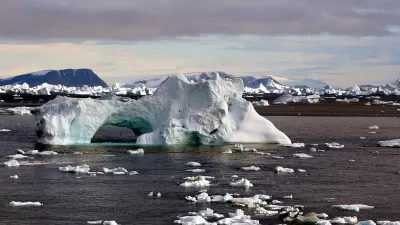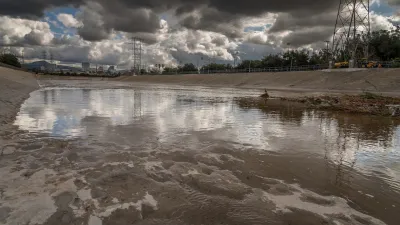Justin Gillis tags along with researchers who are trying to pinpoint just how much of the world's coastlines will be inundated by dramatically rising sea levels. By looking at historical records scientists are beginning to paint a grim picture.

Just how high can we expect global sea levels to rise in the coming decades due to global warming and melting polar ice?
"The question has taken on new urgency in the aftermath of Hurricane Sandy, which caused coastal flooding that scientists say was almost certainly worsened by the modest rise of sea level over the past century. That kind of storm tide, the experts say, could become routine along American coastlines by late in this century if the ocean rises as fast as they expect."
Gillis profiles the work of paleoclimatologists such as Maureen E. Raymo of Columbia University, who is leading a team of scientists studying climate history. "Their evidence that [greenhouse] gases represent a problem is based not just on computerized forecasts of the future, as is commonly believed, but on what they describe as a growing body of evidence about what occurred in the past."
"In previous research [PDF] ," notes Gillis, "scientists have determined that when the earth warms by only a couple of degrees Fahrenheit, enough polar ice melts, over time, to raise the global sea level by about 25 to 30 feet. But in the coming century, the earth is expected to warm more than that, perhaps four or five degrees, because of human emissions of greenhouse gases."
The next few decades could see the release of enough emissions to make dramatic sea level increases inevitable, resulting in a "humanitarian crisis lasting many hundreds of years."
"If the rise is slower than expected, society may have time to adjust, or to develop new technology to solve the problem of greenhouse emissions," says Gillis. "But many scientists are plagued by a nagging fear that the opposite will occur — that their calculations will turn out to have been too conservative, and social stability will eventually be threatened by a rapid rise of the sea."
“At every point, as our knowledge increases,” Dr. Raymo said, “we’ve always discovered that the climate system is more sensitive than we thought it could be, not less.”
FULL STORY: How High Could the Tide Go?

Trump Administration Could Effectively End Housing Voucher Program
Federal officials are eyeing major cuts to the Section 8 program that helps millions of low-income households pay rent.

Planetizen Federal Action Tracker
A weekly monitor of how Trump’s orders and actions are impacting planners and planning in America.

Canada vs. Kamala: Whose Liberal Housing Platform Comes Out on Top?
As Canada votes for a new Prime Minister, what can America learn from the leading liberal candidate of its neighbor to the north?

Washington State’s Parking Reform Law Could Unlock ‘Countless’ Acres for New Housing
A law that limits how much parking cities can require for residential amd commercial developments could lead to a construction boom.

Wildlife Rebounds After the Eaton Fire
Following the devastation of the Eaton Fire, the return of wildlife and the regrowth of native plants are offering powerful signs of resilience and renewal.

LA to Replace Inglewood Light Rail Project With Bus Shuttles
LA Metro says the change is in response to community engagement and that the new design will be ready before the 2028 Olympic Games.
Urban Design for Planners 1: Software Tools
This six-course series explores essential urban design concepts using open source software and equips planners with the tools they need to participate fully in the urban design process.
Planning for Universal Design
Learn the tools for implementing Universal Design in planning regulations.
Central Transportation Planning Staff/Boston Region MPO
Heyer Gruel & Associates PA
Institute for Housing and Urban Development Studies (IHS)
City of Grandview
Harvard GSD Executive Education
Regional Transportation Commission of Southern Nevada
Toledo-Lucas County Plan Commissions





























